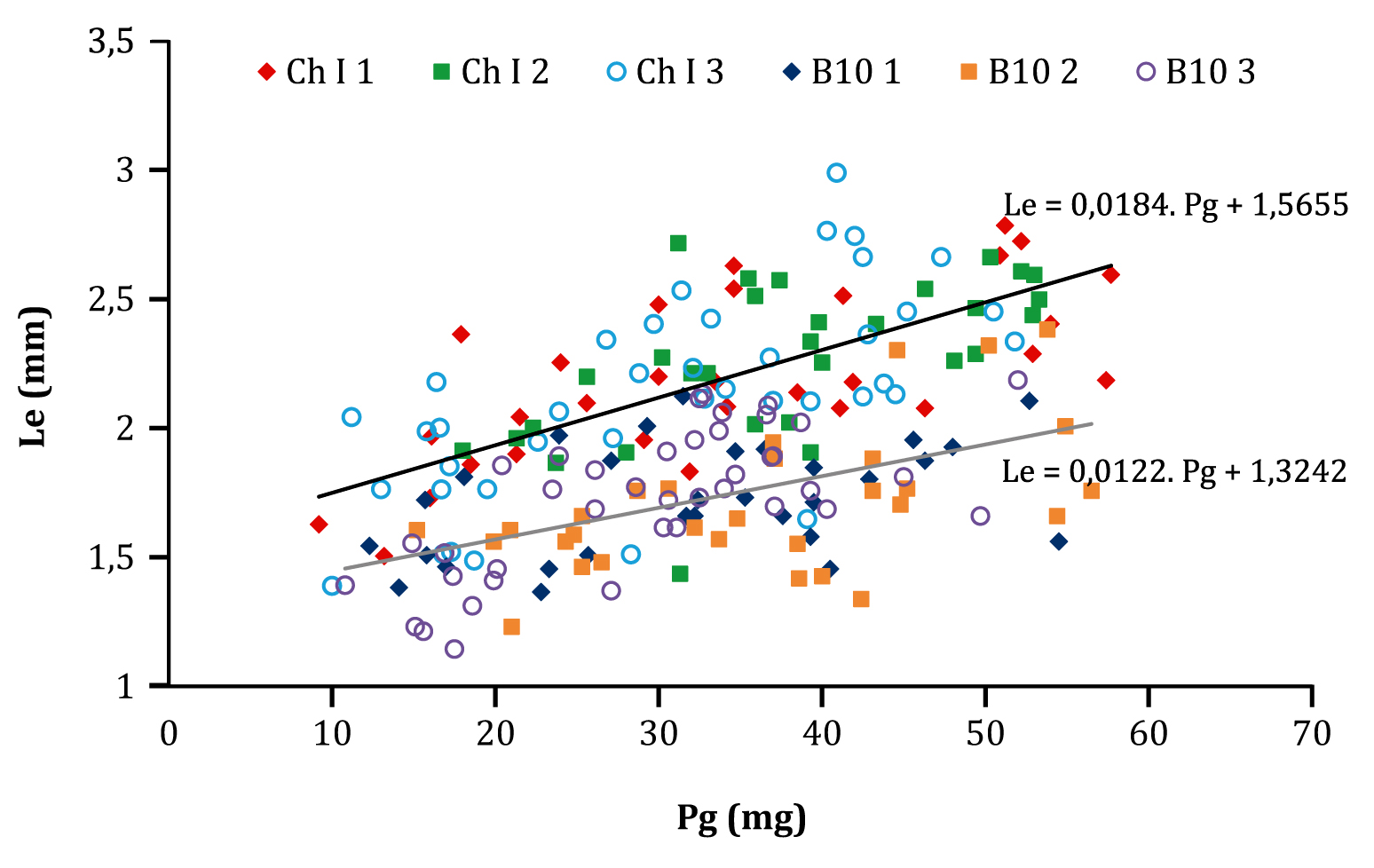Size and shape variables of wheat grains and embryos: analyses and suggestions
Keywords:
Triticum aestivum, embryo size, embryo shape, grain size, grain shapeAbstract
The aims of this work were to discriminate among a group of variables of size and shape of wheat grains and embryos, some of direct measurement or primary variables (VP) and others derived from them or secondary variables (VS), those which were most adequate to describe these two characteristics, those equivalent or redundant, and to improve or propose new variables. Grains of a wide size range of two wheat cultivars, which visually differ in shape, were studied. The grains were produced in a three-year field experiment. The first axis (67.77% of the variance) obtained by Principal Component Analysis was associated with VP and VS of both grain and embryo size, while second axis (16.73% of the variance) was associated with VS of shape. Some variables, such as embryos Length and Form-density factor, presented mixed or unexpected associations. It is suggested a modified Form-density factor (Ffdm) which showed a low number of significant correlations with size VP. Also, it was possible to propose two new variables: one that evaluates the shape of grains (Desf AN) and the other, the relative embryo-grain size (Le/Lg). Both variables could differentiate between cultivars, were not affected by production year, and showed few significant correlations with VP.

Downloads
Published
Issue
Section
License
Aquellos autores/as que tengan publicaciones con esta revista, aceptan las Políticas Editoriales.


